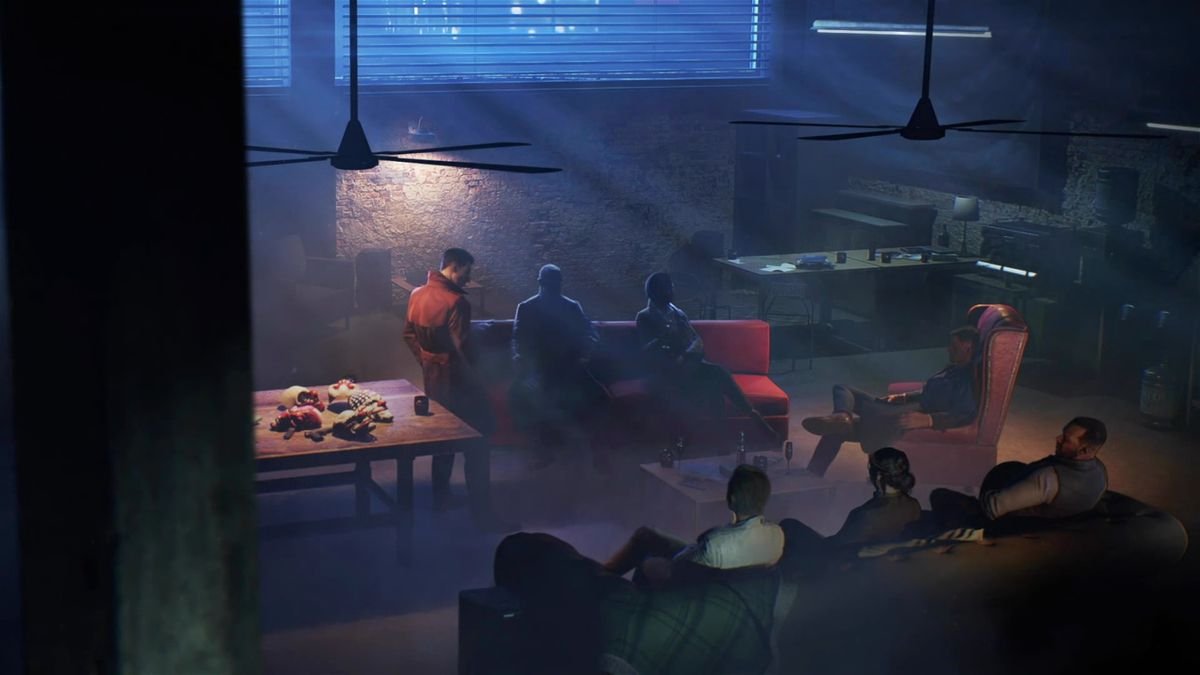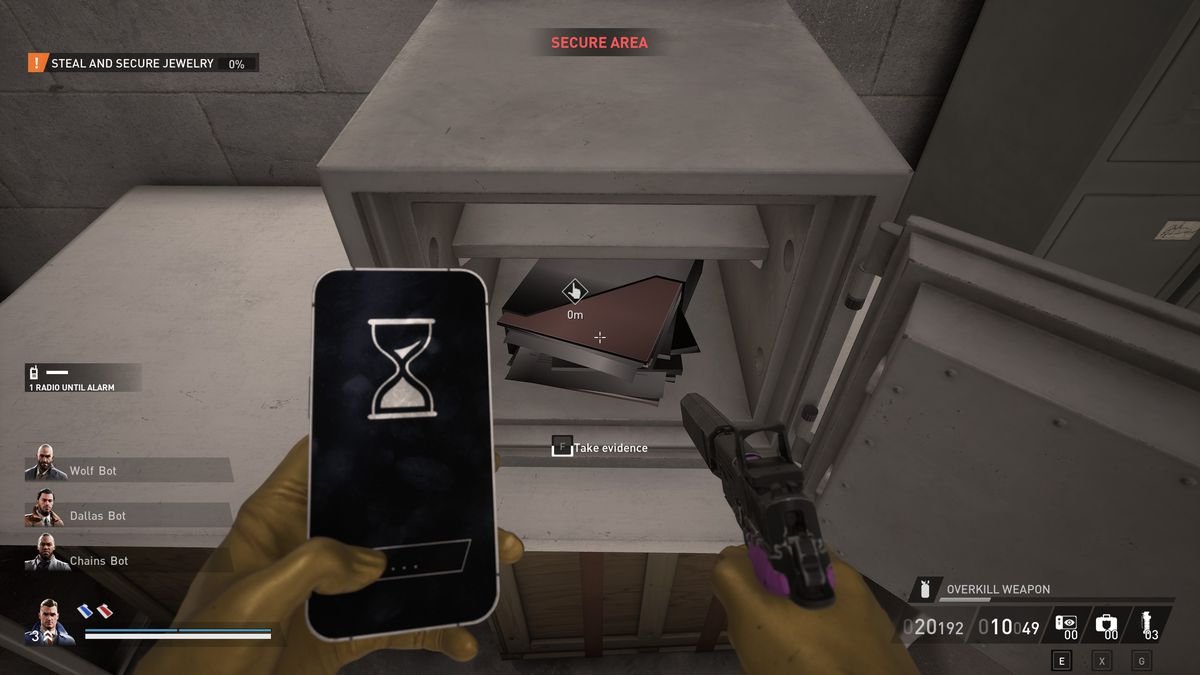Payday 3 is bare-bones at launch, but I still can’t stop playing it. As I perfect my heisting strategies and flesh out my character build, I can’t shake the feeling that I’m playing a promising early-access build of a game that will be excellent in a few years’ time.
The good news is that it certainly looks better than its predecessor. What’s more, the tension-and-release pacing of its heists creates a powerful atmosphere, pumping me full of adrenaline and emotion on a regular basis. Running into the open in the middle of a police assault to lower the bollards for a getaway vehicle is nail-biting stuff, as is weaving through sniper lasers to stash vault-stolen money bags on a hovering helicopter. Across the board, there’s a thrilling aura to Payday 3’s heists that only grows as you get deeper into the difficulty levels and brush up against the inherent chaos of the AI. Things can go wrong in an instant, and they often do — but the focus here is on adapting to the mayhem rather than being resigned to it.
Payday 3’s biggest change to the cooperative heisting formula is in how it prods you to break away from your muscle memory and indulge in everything it has to offer. While I was teaching a co-op partner how to stealth their way through the game’s opening bank heist, they mistakenly threw a grenade, scuppering our endeavors. In Payday 2, this would summon an instant restart, but in Payday 3, you can still have fun making it out alive, no matter how much you may begrudge the guns-blazing pivot. This is the new platonic ideal of a Payday heist experience: Start in stealth, but eventually go loud. The best of both worlds? It’s complicated.

Image: Starbreeze Studios, Overkill Software/Deep Silver via Polygon
Along with the disappointing always-online stipulation that ensures players live in fear of losing half an hour of progress to server or internet trouble, Payday 3 gives solo and stealth-focused players less incentive to keep playing long term.
This is partly because weapons and skill trees have their own progression systems, but your overarching level is gated by the completion of particular challenges rather than heist difficulty, with a focus on using every weapon and piece of equipment in the game’s arsenal.
Furthermore, while there are some stealth-focused challenges, of course, when you reach the mid-game, you can perfect a heist at the highest difficulty and receive no extra XP or cosmetic reward for your trouble. In the time it takes for you to stealth your way through it, you might as well have completed it three times as loud as possible, changing weapons with each attempt.
In swapping specialization for dynamic adaptability, you have a game that is more approachable to a broader audience at the cost of alienating hardcore players. But even with this shift, the social element of Payday 3 is lacking. With no server browser, matchmaking is a lottery, and it’s difficult to communicate in multiplayer lobbies, making it tough for solo players to make friends and fall into a crew to replace the inadequate AI bots.

Image: Starbreeze Studios, Overkill Software/Deep Silver via Polygon
Payday 3 remixes the objectives and layouts of familiar locations — nightclubs, art galleries, and penthouses — but the all-new heists leave the best impression. “99 Boxes” tasks you with finding degrading components in a shipyard, and “Road Rage” has you escorting an armored truck across a busy bridge.
Both missions get desperately tense on higher difficulties, and the gunplay shines during Payday 3’s epic final assaults as you crack the thin glass door on advancing riot shields to nail headshots and escape clumps of cops. Hearing the news that an elite enemy like the armored Dozer has arrived on the scene is genuinely harrowing when you’re running out of ammo, too. But once you’ve played each heist a few times, the lay of the land becomes intimate, which kneecaps replayability outside of the allure of Payday 3’s moreish gunfights. Due to the instanced servers, you don’t get a new layout every time you restart, either, so unraveling an environment becomes more about trial and error than reactive tactics.
Payday 3’s straight-laced story is played out via animatics that you unlock by completing the game’s eight heists in sequence. It covers the un-retirement of the Payday crew to take down a nefarious corporate entity, and there’s really not much else to say about it. Thankfully, the charming barks and voice performances pull serious weight to give the playable heisters lots of personality. Brit thief Hoxton’s guard radio replies became a consistent highlight as he weaved tall tales about feeding a mountain lion a kebab or eating a beans-on-toast buffet.

Image: Starbreeze Studios, Overkill Software/Deep Silver via Polygon
Far more egregious than a lacking narrative is that Payday 3 removes multiple gameplay systems without providing worthy replacements. You have unlimited cable ties to turn civilians into hostages this time around, and there’s no concealment rating, multiple-day heists, or utility weapons like Payday 2’s portable saw. Drills and drill-related skills are much less of a factor, too — it’s all an effort to allow you to approach heists in any way you want, but it has created a worrisome vacuum.
In place of all this upheaval, we have extra-forgiving stealth phases, a long list of skill trees, and three new buffs — Edge, Grit, and Rush — that boost damage, defense, and movement speed, respectively. Payday 3’s buffs are tied to certain skills and can be triggered in-game to create a chain of benefits. Figuring out how to activate them in sequence demands intuition, leading to amusing interplay as you unlock more skill points to play with. For example, if I maintain Rush, I can insta-jiggle locks and barge through locked doors.

Image: Starbreeze Studios, Overkill Software/Deep Silver via Polygon
However, at level 38 with a measly 11 skill points, I already feel like I’ve gotten all the abilities I want, and I’m struggling to understand the benefits of getting into the weeds of the new build system. I’m not jonesing for anything the vendors are peddling, and it wouldn’t matter if I was, as I haven’t struggled for money to try out every gun as they became available. Broadly, the systemic additions aren’t making up for what has been left behind, and Payday 3’s economy isn’t strong enough to keep me grinding for months on end.
Yet even with all these issues, I can’t help but feel invested in Payday 3’s future. Over the past 10 years, many games have tried and failed to imitate Payday 2’s success, which is why Starbreeze can deliver such a limited foundation that still feels compelling. It’s like watching a new movie by your favorite esoteric director that isn’t quite up to scratch. You’re grateful to just have more, even if it’s not the huge step forward you were looking for.
Hopefully, with time and consideration, Payday 3 can usurp its predecessor, but for now, that predecessor looms large over the new game’s launch. Even if the moment-to-moment gameplay has been improved, the soul of Payday is clearly in the systems that surround it, which is where this threequel is sorely lacking.
Payday 3 was released on Sept. 21 on PlayStation 5, Windows PC, and Xbox Series X. The game was reviewed on Xbox using a pre-release download code provided by Deep Silver. Vox Media has affiliate partnerships. These do not influence editorial content, though Vox Media may earn commissions for products purchased via affiliate links. You can find additional information about Polygon’s ethics policy here.

















































